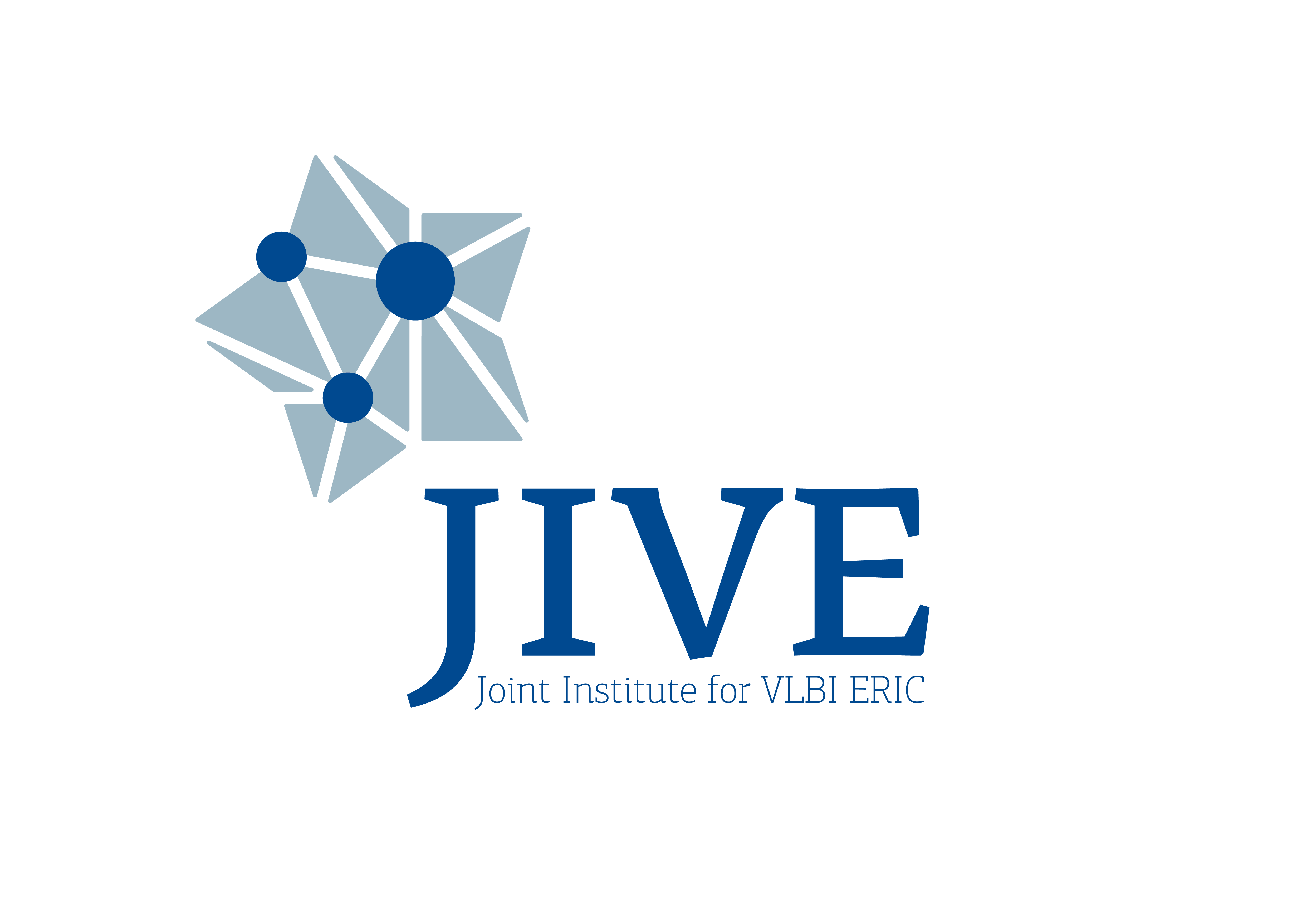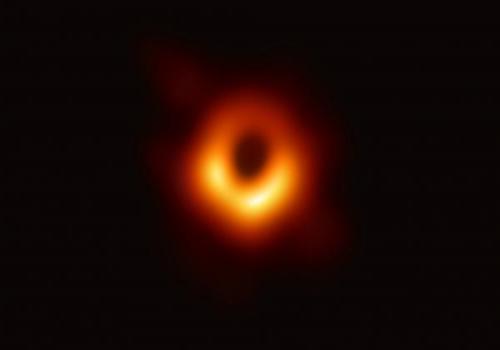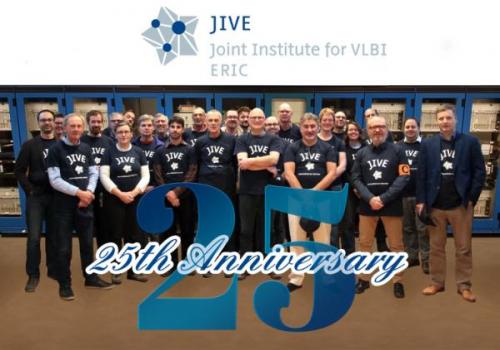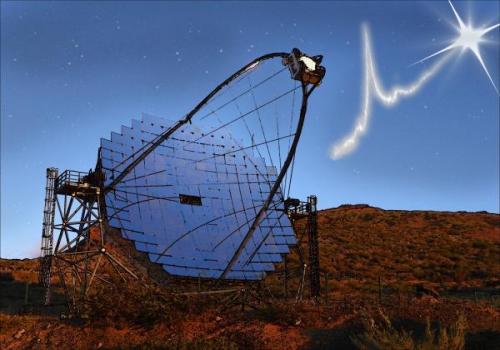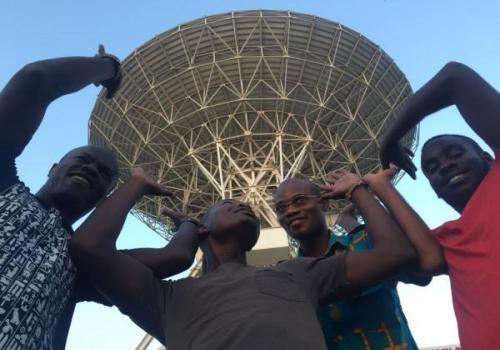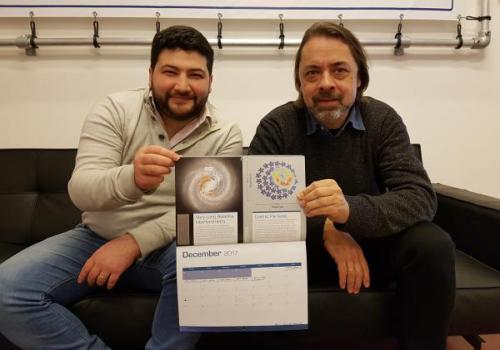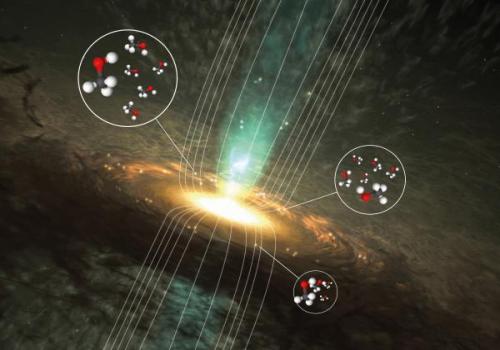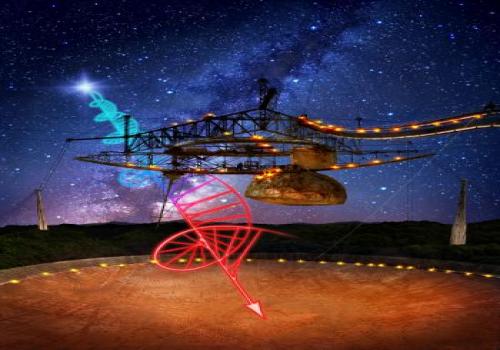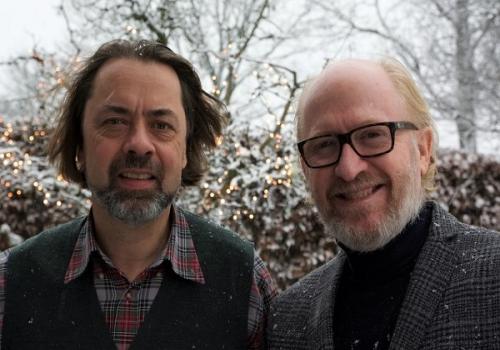News
Astronomers Capture First Image of a Black Hole
10/04/2019
The Event Horizon Telescope (EHT) collaboration, who produced the first ever image of a black hole, has revealed today a new view of the massive object at the centre of the M87 galaxy: how it looks in polarised light. This is the first time astronomers have been able to measure polarisation, a signature of magnetic fields, this close to the edge of a black hole. The observations are key to explaining how the M87 galaxy, located 55 million light-years away, is able to launch energetic jets from its core.
A global network of radio telescopes exposes the aftermath of a violent merger of neutron stars
09/04/2021
Astronomers have combined radio telescopes from five continents to prove the existence of a narrow stream of material (jet) emerging from the only gravitational wave event involving two neutron stars observed so far.
25th anniversary of the Joint Institute for VLBI ERIC
23/03/2021
On December 21st, 1993, the Joint Institute for VLBI in Europe (JIVE) was created by the European Consortium for VLBI, inspired by the vision of Richard Schilizzi, who became its first director, who recognised the potential of building a dedicated correlator for the European VLBI Network (EVN) in Dwingeloo, where JIVE is hosted by ASTRON.
Astronomers pinpoint an extreme binary system and track its motion within the Milky Way
22/04/2021
Astronomers have combined data from an Australian network of radio telescopes and the optical Gaia satellite to track the motion of an extreme binary system and unveil its past.
Astronomers observe a fast radio burst at multiple wavelengths for the first time
22/04/2021
Astronomers have combined data from multiple wavelengths across the electromagnetic spectrum to study the emission limits of the only known repeating fast radio burst.
African Radio Astronomy continues to grow
09/04/2021
Support scientists Ross Burns and Jay Blanchard recently travelled to Ghana to deliver a radio astronomy training programme as part of the EU H2020 JUMPING JIVE project. Activities such as this contribute to the growth of local expertise in the African VLBI Network.
Behind the scenes of The Big Bang Theory
30/04/2021
"I got into Nature last year, I was nominated for a faculty teaching award and my kids don't care, but if your simulations get on The Big Bang Theory then that's something!" says Huib van Langevelde, a Senior Scientist at the Joint Institute for VLBI ERIC (JIVE) and Professor of Galactic Radio Astronomy at Leiden University.
Astrochemists reveal the magnetic secrets of methanol
09/04/2021
A team of scientists, led by Boy Lankhaar at Chalmers University of Technology, has solved an important puzzle in astrochemistry: how to measure magnetic fields in space using methanol, the simplest form of alcohol. Their results, published in the journal Nature Astronomy, give astronomers a new way of investigating how massive stars are born.
Astronomers peer into the lair of a mysterious cosmic radio burster
22/04/2021
One year ago, an international team of astronomers, which included JIVE researchers, pinpointed the location of a Fast Radio Burst (FRB) for the first time. Now they have found that the source of the bursts exists in an extreme and unusual environment.
Paco Colomer to take over as JIVE director
11/12/2017
Francisco ‘Paco' Colomer will become the director of JIVE, beginning in January 2018. He takes over the position that Huib van Langevelde has held for ten years. Colomer joined JIVE as policy officer and manager of the EC-funded ‘JUMPING JIVE' project in 2017; he came from the Spanish National Geographic Institute, where he had acted as coordinator of VLBI activities with the Yebes telescopes for the last 20 years.
